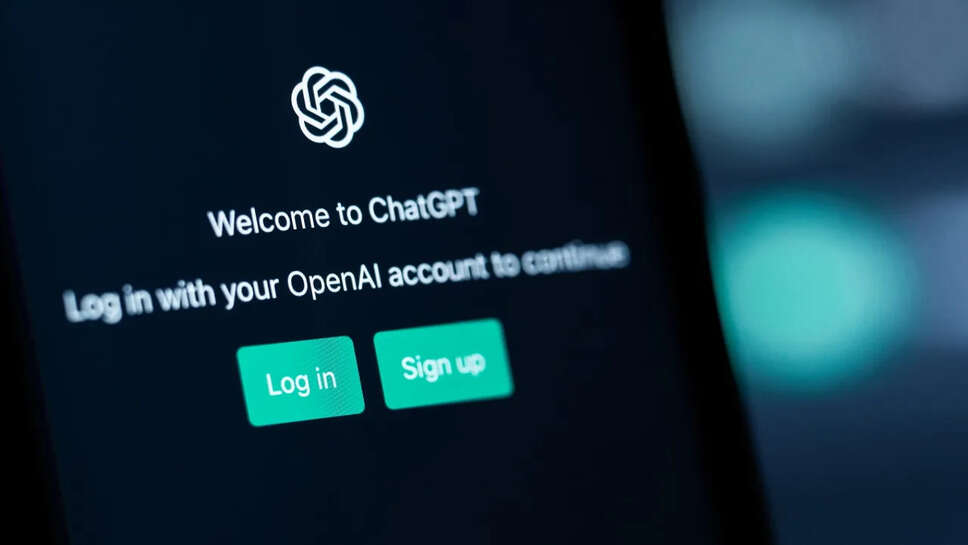OpenAI Restores ChatGPT After More Than Three Hours of Inaccessibility

Today witnessed a significant hiccup in the digital landscape as ChatGPT, OpenAI’s renowned AI-powered chatbot, faced a widespread outage that persisted for over three hours. Millions of users across the globe encountered connection errors, failed responses, and signs of latency, prompting a wave of speculation and frustration. By midday, however, the chatbot’s service was restored, leaving stakeholders and users relieved—but curious about how such a disruption unfolded and what lessons can be drawn from it.
What Happened: A Sudden Stop in Service
Shortly after users began interacting with ChatGPT this morning, reports started pouring in via social media and status updates. The platform became unresponsive, yielding error messages or failing to generate any replies. For many, rudimentary commands and simple requests were enough to trigger a timeout—an unusual break in what is typically a fluid and immediate exchange.
Anonymous indicators within the developer community suggested that a backend failure in one of the server clusters might have cascaded, disrupting multiple service regions. This is speculation pale in comparison to the silence from OpenAI's official channels for much of the first two hours.
User Reactions: Frustration and Humor
User sentiment during the outage ran the gamut from exasperation to comedic lament. Many researchers, writers, and professionals who rely on ChatGPT for daily tasks expressed deep inconvenience.
-
A college student venting on social media remarked: “My whole essay got stuck in limbo—thanks, ChatGPT!”
-
A software developer joked, “Code suggestions have gone rogue,” while waiting for the interface to come back online.
Humor was paradoxically mixed with anxiety, particularly among enterprises and educators who had come to depend on ChatGPT’s reliability. Several small startups reported that hours of paused productivity equated to tangible business losses.
The Cause: From Backend Glitch to Full Restoration
Although OpenAI has not released a detailed post-mortem yet, insiders and early responders pointed to a backend subsystem failure. Here's a breakdown of how the disruption appears to have unfolded:
-
Initial Fault – One or more critical server nodes began returning error codes.
-
Resource Drain – Redirected traffic overloaded other nodes, leading to broader service slowdown.
-
User Impact – The interface froze, API calls stalled, and error rates climbed rapidly.
-
Escalation and Response – OpenAI engineers flagged the spike, diagnosing a software component kernel or middleware collapse.
-
Mitigation – Engineers rolled back recent updates and redistributed traffic, restoring most services.
-
Recovery – Stability checks and gradual capacity scaling ensured full access was reinstated across all regions.
The turnaround—around three hours in total—points to a resilient system and an efficient incident response process.
Transparency and Communication Breakdown
One of the most criticized aspects of the incident was the lack of real-time updates from OpenAI. Unlike some platforms that deploy staged notifications—such as acknowledging issues, flagging partial outages, and explaining fixes—OpenAI kept a low profile on official channels until late into the recovery phase.
This silence irked some users who rely heavily on the platform for academic, professional, or personal assistance. In the age of instant online dependency, even minor downtimes can trigger panic. Transparent communication, experts say, is almost as vital as swift technical resolution, as it builds trust and mitigates user frustration.
Business Impact: Productivity Interrupted
During the three-hour hiatus, businesses and individuals dependent on ChatGPT found themselves navigating blind spots. Freelancers composing documents, content creators drafting scripts, and learners seeking quick explanations all found themselves in a standstill.
-
Some digital marketing teams reported a ripple effect: “Our content calendar was paused mid-schedule.”
-
Research analysts, who use the chatbot for summarizing information, also flagged delays in their workflow.
While three hours may feel minor in the grand scheme, the outage underscores how integrated such AI tools have become in daily operations. As organizations lean into generative AI for fast, reliable assistance, the need for robust uptime becomes non-negotiable.
Infrastructure Load and Peak Usage Patterns
The outage coincided with a surge in usage that may have stress-tested OpenAI’s servers. Peak hours—especially midday for Western countries and evening for Asia—often see simultaneous global traffic hitting the system. Human-generated events like news releases and trending conversations can amplify load instantly.
Speculation suggests that even minor misconfigurations in balancing algorithms or capacity thresholds could be enough to destabilize performance. This incident will likely tilt OpenAI toward aggressive scaling strategies, preemptive load-balancing, and further redundancy across data centers.
The Road Ahead: Strengthening Stability
In the aftermath, the conversation is shifting toward what OpenAI needs to do to prevent similar disruptions:
-
Improved Monitoring – Real-time dashboards and automated alerts would help in diagnosing issues as soon as they arise.
-
Fail-safes and Redundancy – Backup systems that divert traffic seamlessly could reduce single points of failure.
-
Regular Drills – Simulated outages can test a company’s readiness and ability to switch flags mid-crisis without user impact.
-
Clearer Communication Channels – Scheduled status updates, even brief ones, foster goodwill and understanding with users.
OpenAI’s priorities likely include expanding server capacity, implementing distributed failover protocols, and updating incident notification systems. As a company at the forefront of AI adoption, bolstering infrastructure reliability has shifted from luxury to imperative.
Community & Industry Response
Observers from the AI and tech world weighed in on the significance of the outage:
-
Some noted that even market giants with massive computing resources experience unplanned downtime, citing similar past issues with major cloud services.
-
Others emphasized that the incident serves as a reminder: AI systems, no matter how advanced, are still dependent on classical engineering constraints—servers, networks, capacity limits.
For smaller teams using ChatGPT as a backbone of productivity, this outage acted as a wake-up call—to build contingencies like fallback tools, cross-platform redundancy, or local prompts.
Trust Restored—But Vigilance Needed
With the chatbot now fully operational, many users are returning to business as usual, though some expressed lingering apprehension. The outage exposed a challenge: ChatGPT is no longer just a novelty—it’s a core productivity asset entwined in everyday workflows.
The trust that users place in generative AI rests heavily on continuous availability. Any future flakiness—be it a minute or an hour—could erode confidence and push users to explore more reliable or offline alternatives.
What You Can Do as a User
In light of this outage, here are steps you can take to minimize disruption in future:
-
Save Drafts before sending requests.
-
Work Offline when possible, reducing reliance on live responses.
-
Follow Official Channels like OpenAI’s status page or developer forums for updates.
-
Explore Backup Tools that can step in during service disruptions.
-
Report Issues Promptly to help the team identify and fix glitches faster.
These small proactive measures can significantly cushion the effect of unforeseen downtimes.
Final Thoughts
Today’s incident reminds us how entwined generative AI has become with our daily routines—from brainstorming content to building software and communicating across teams. The curse of convenience is dependence; when an AI assistant like ChatGPT slips offline, the impact is felt widely and deeply.
But the good news is twofold: the system rebounded in under half a workday, and the incident offers a learning moment for both OpenAI and its users. As AI grows more central to our lives, both service providers and users must take shared responsibility for reliability. For OpenAI, that means better architecture and better updates. For users, it means smarter workflows and backup plans.
At present, ChatGPT stands restored. But as its role continues to deepen—from writing assistant to research partner to business tool—the need for rock-solid, always-on service becomes paramount. Today was a reminder. And tomorrow, we’ll see how strongly the system and its community have learned.
